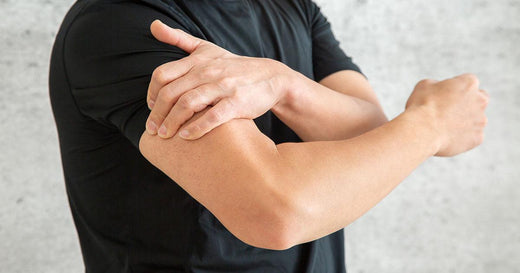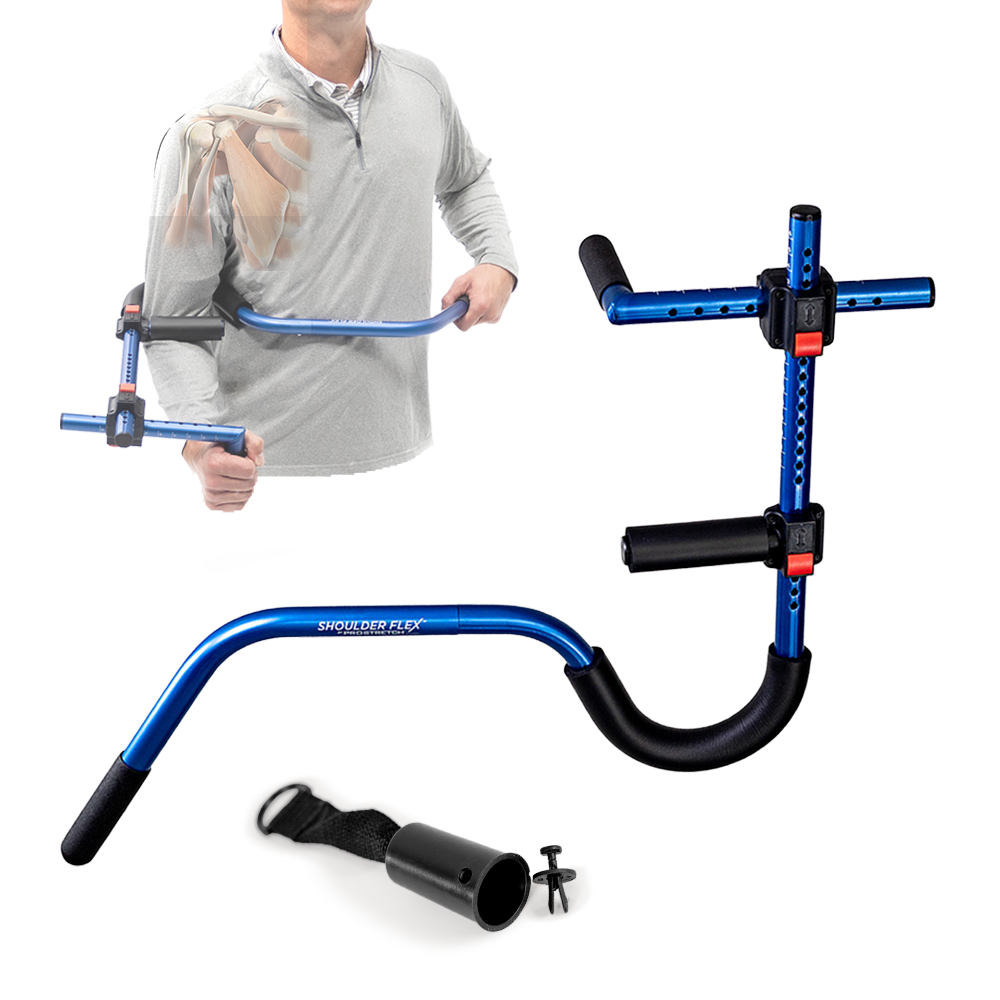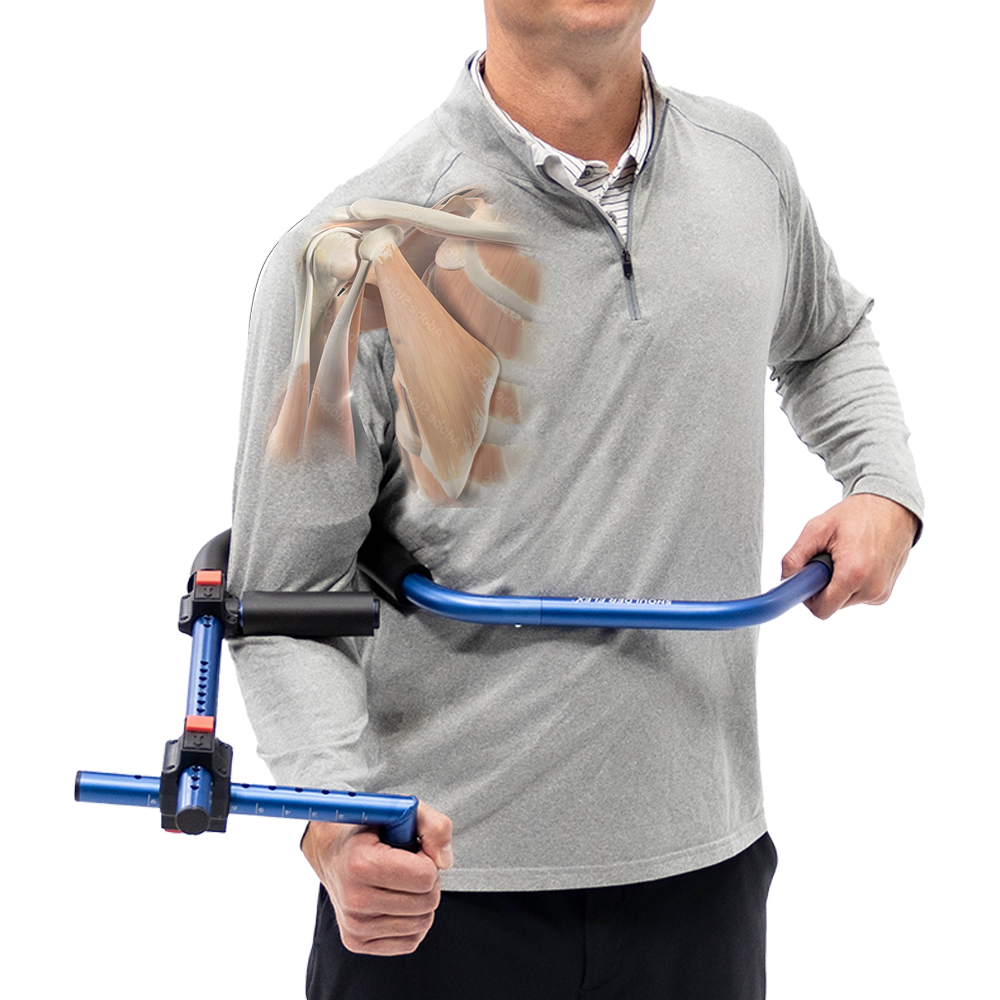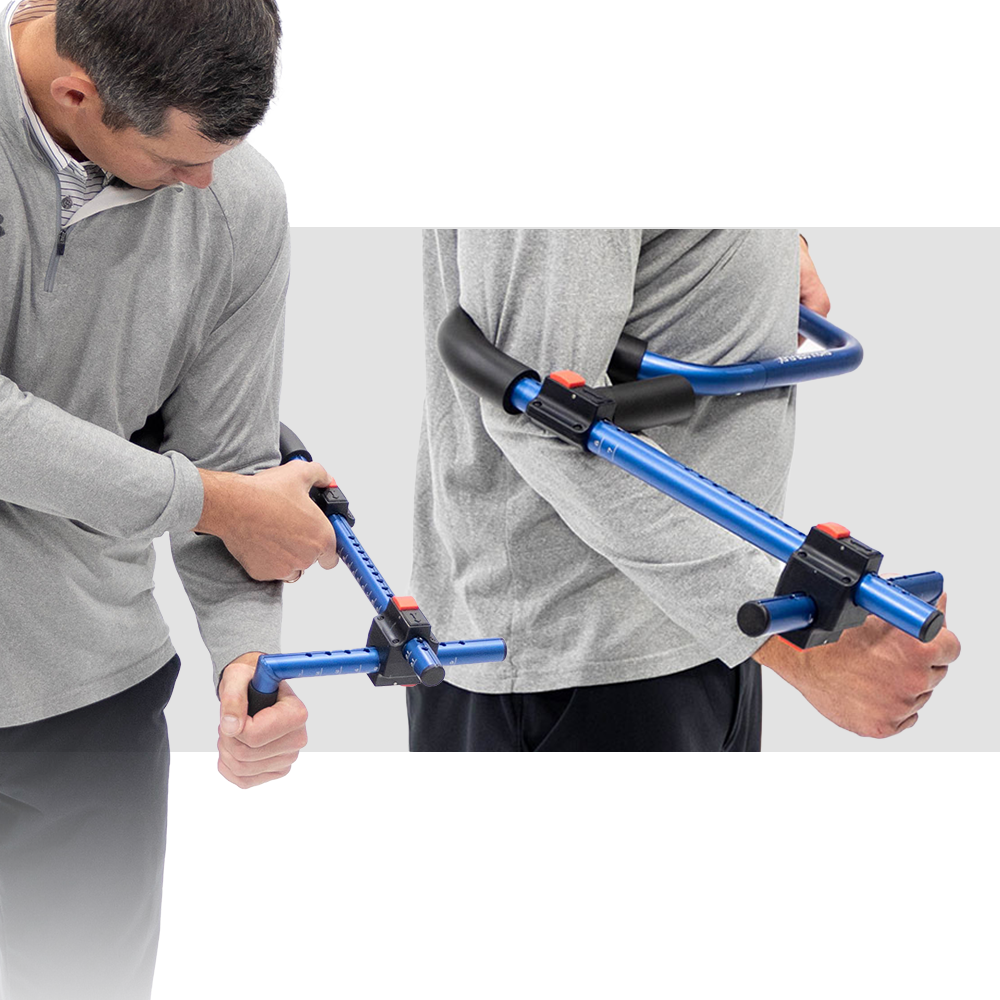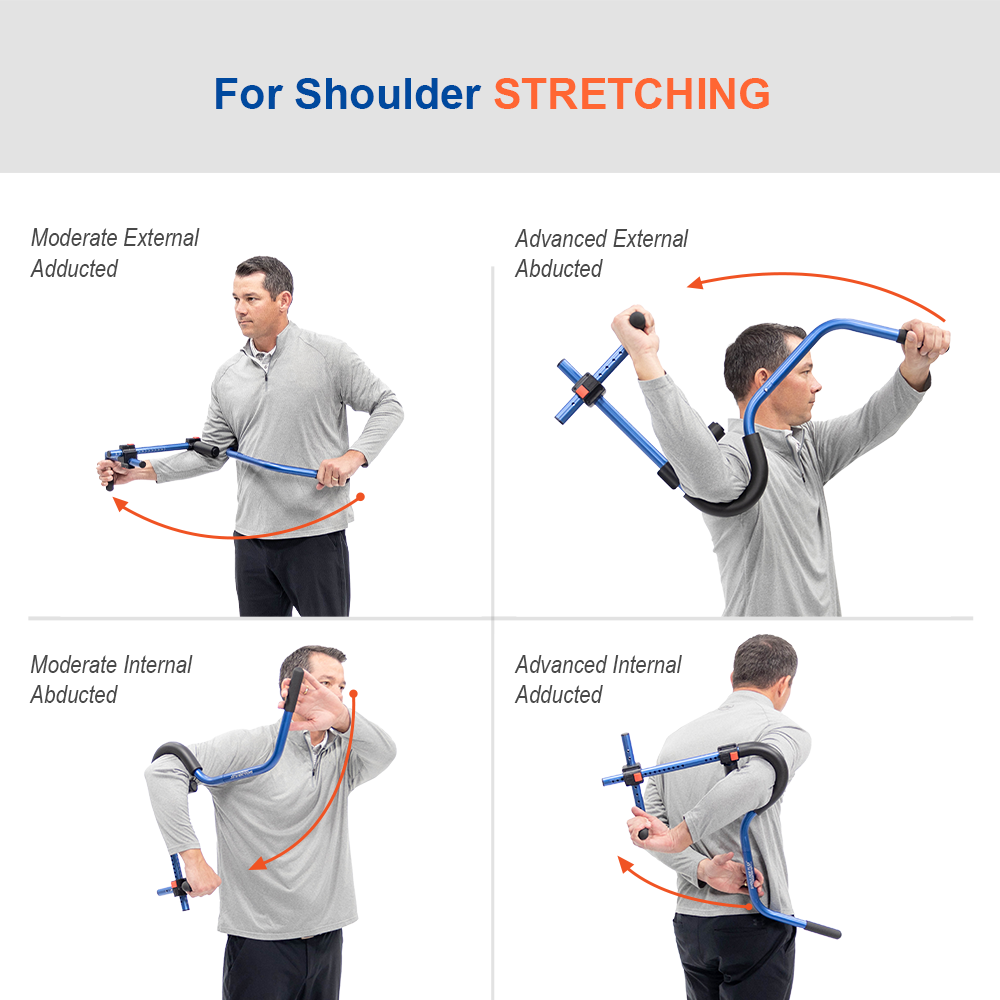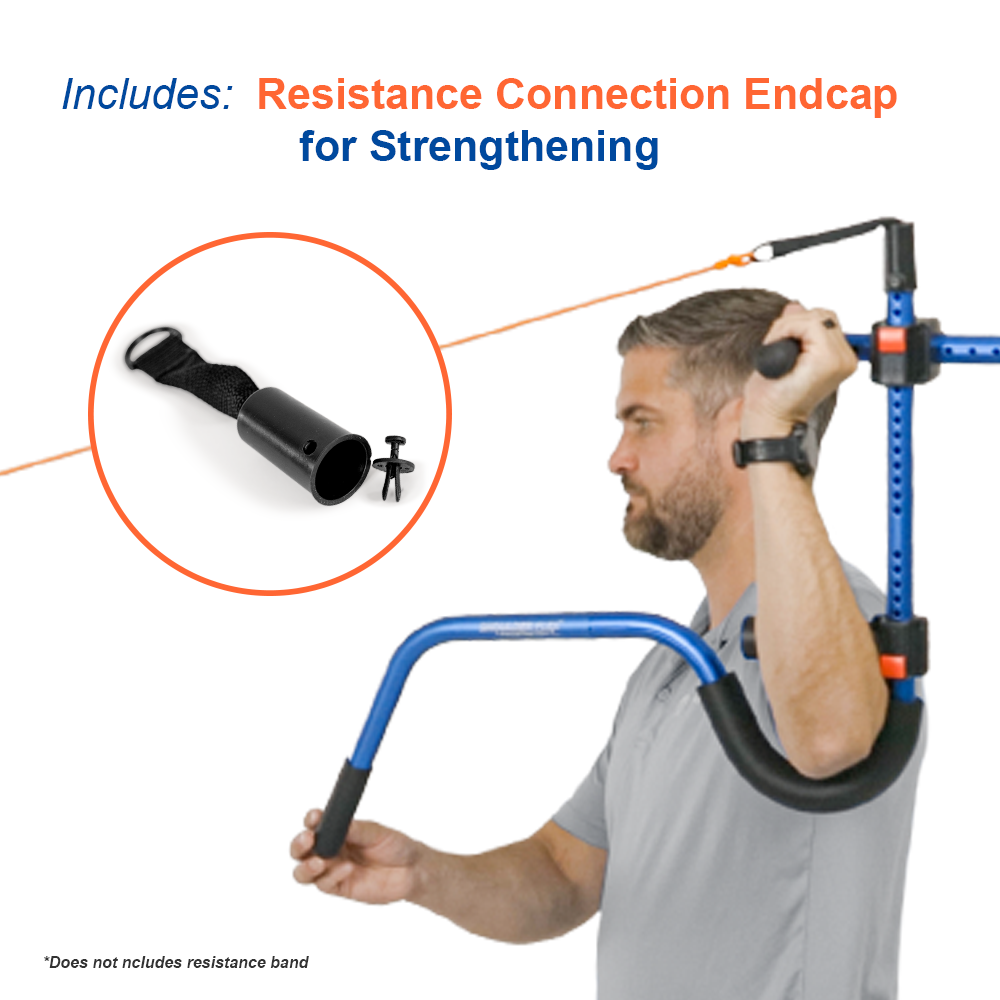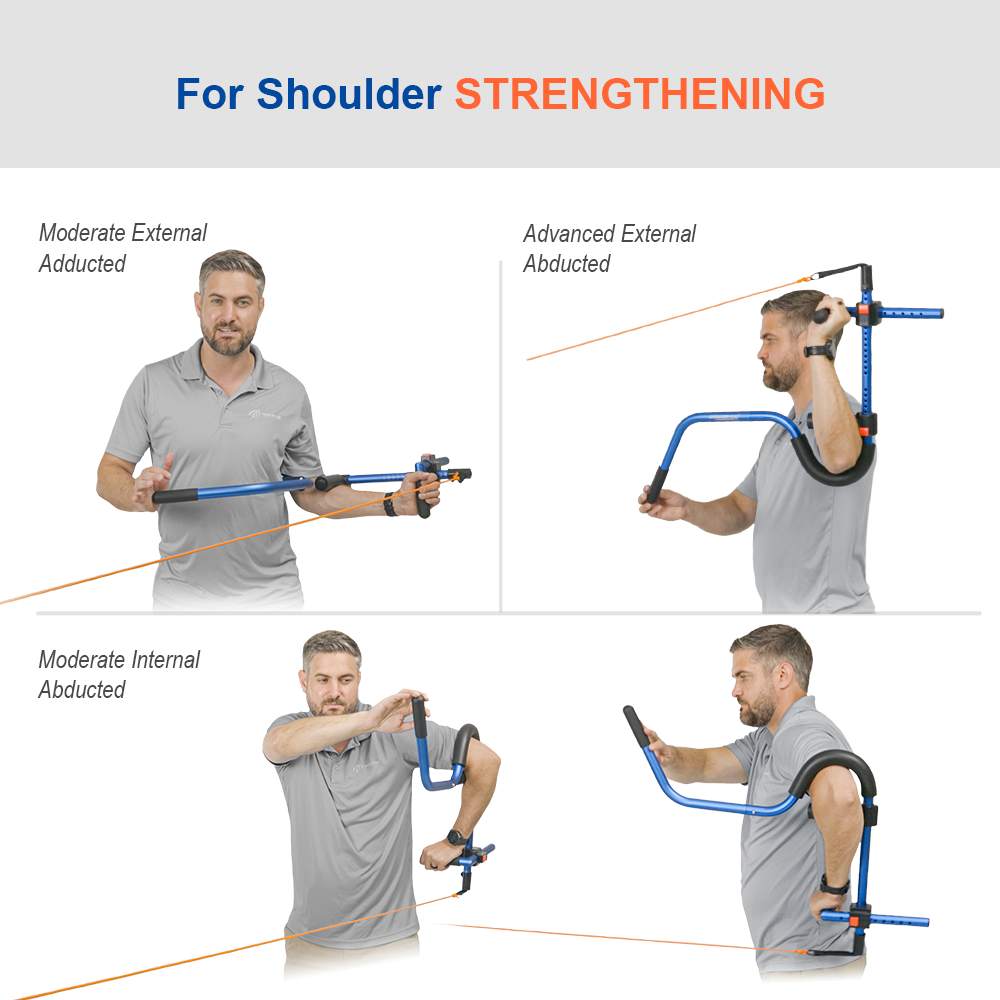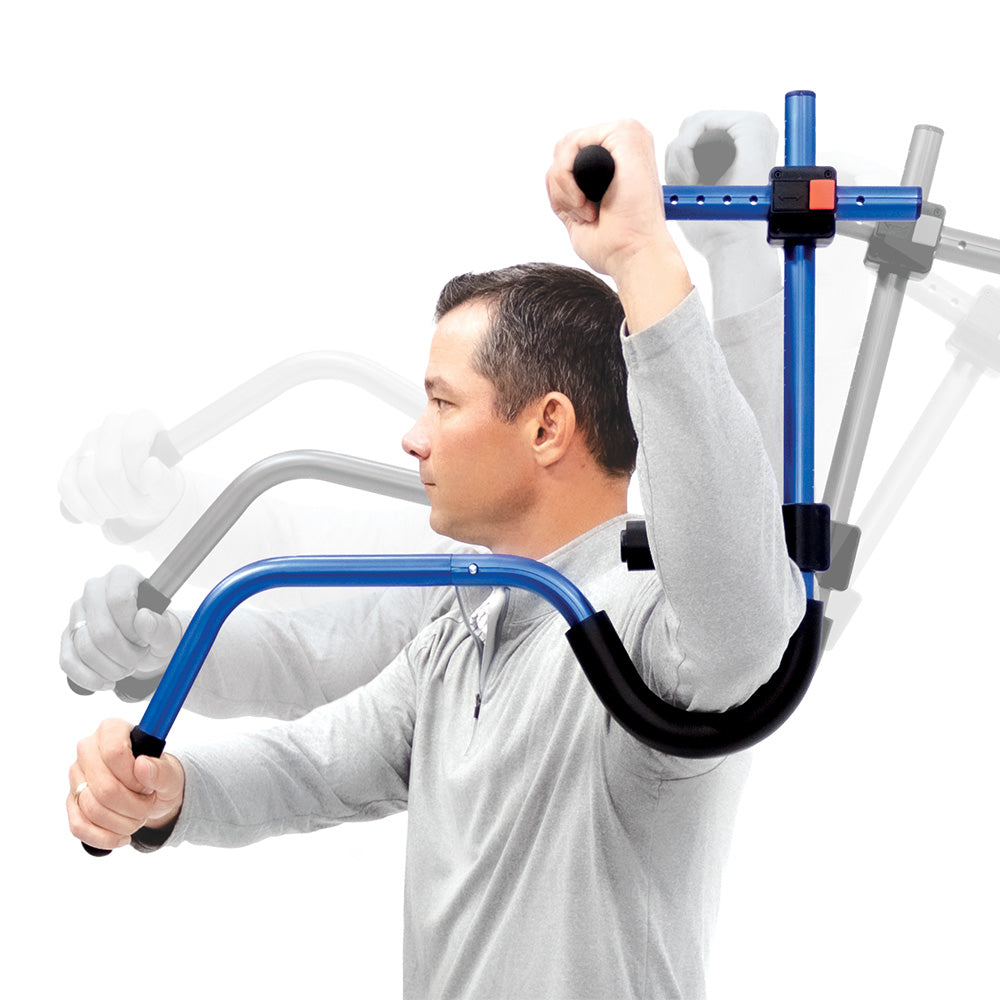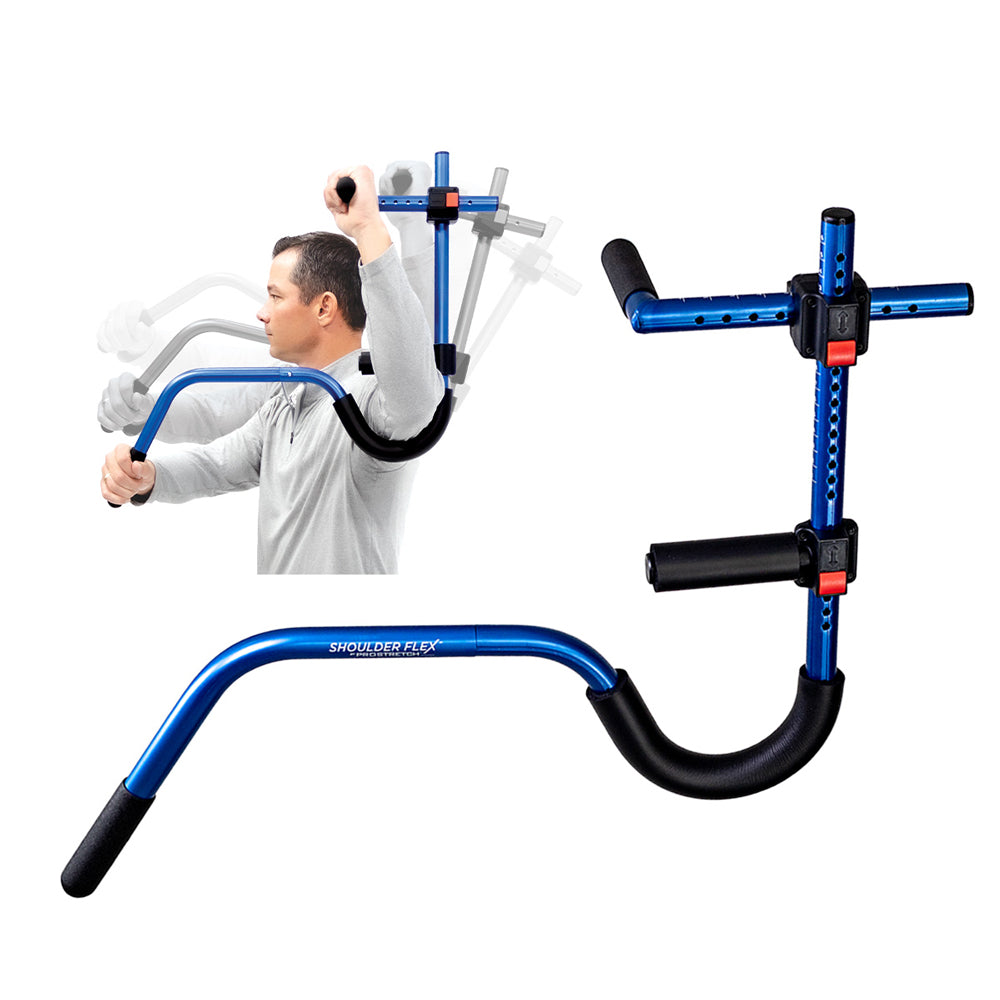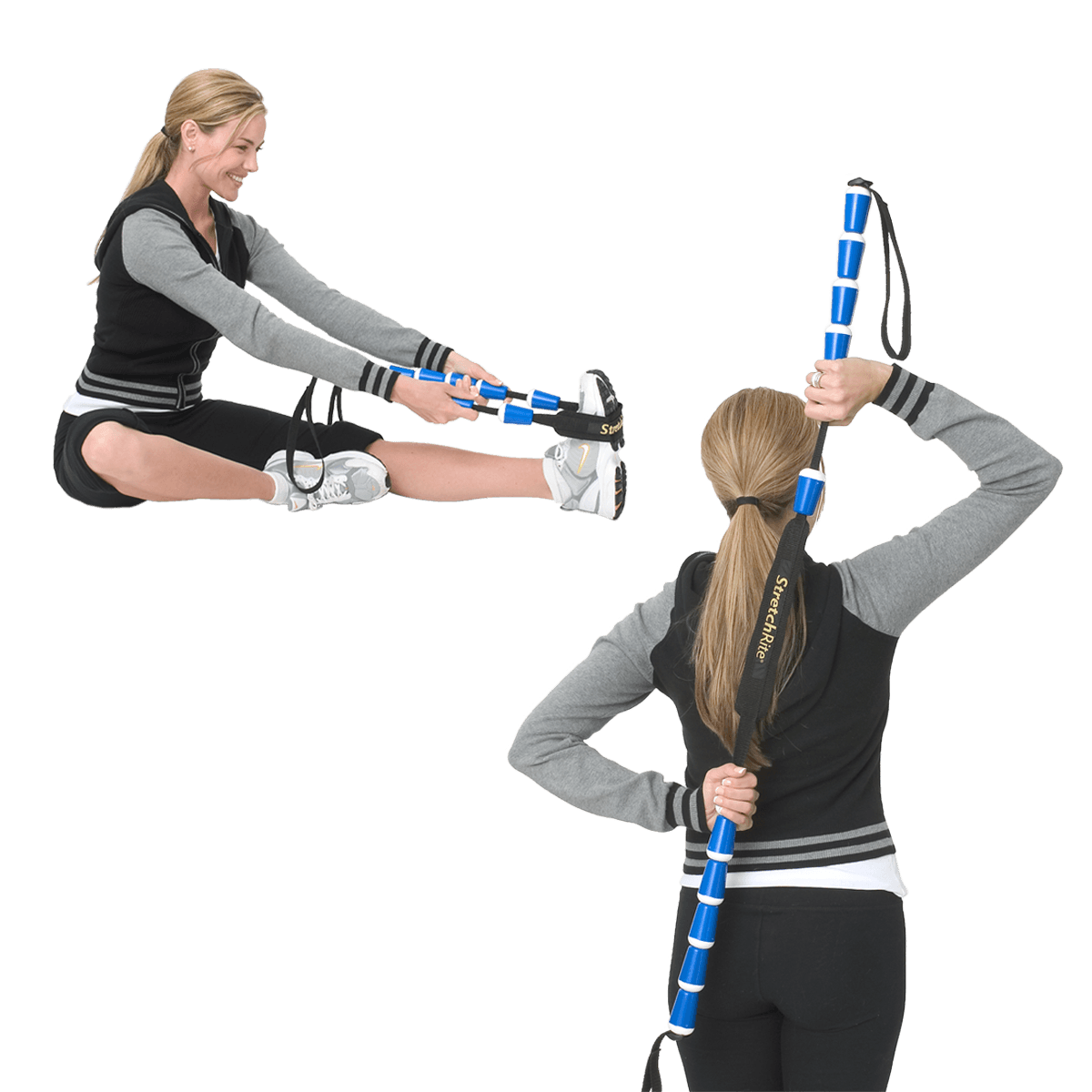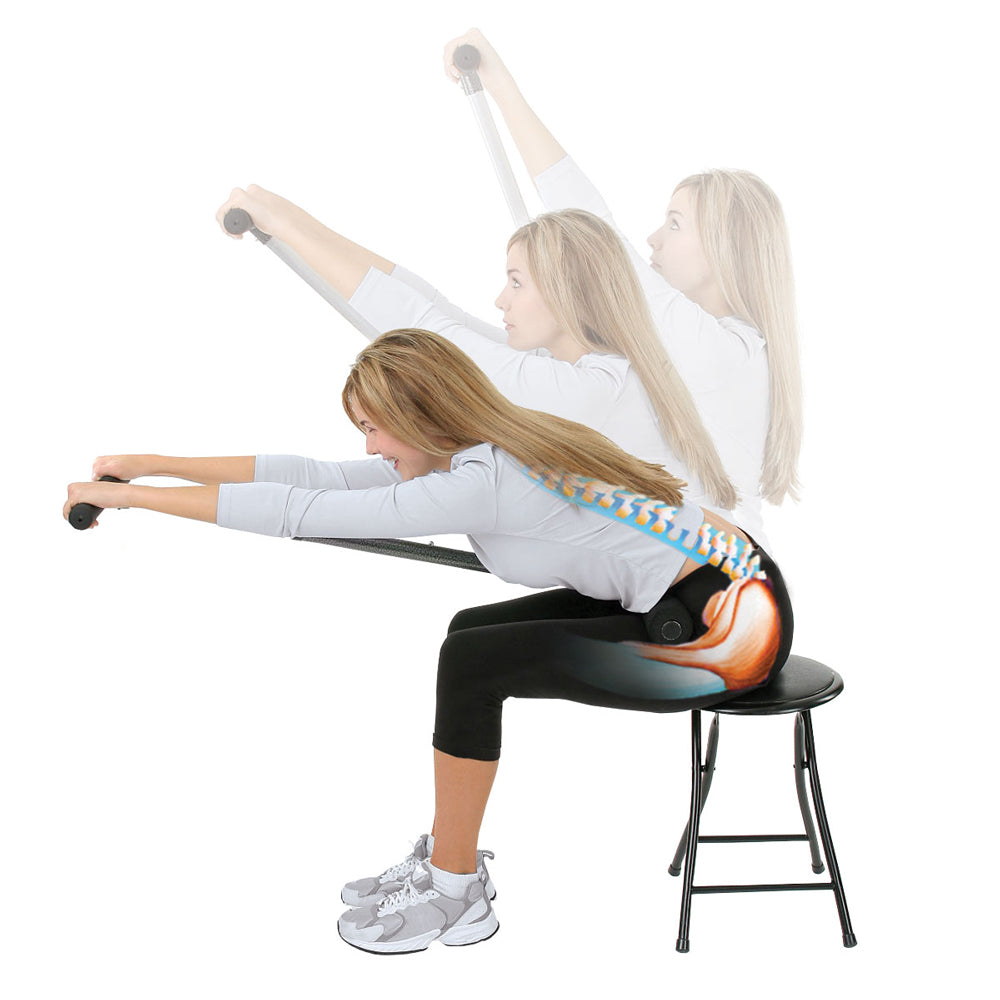Exercising your arm is a good way to find the pain relief you are looking for and there are some important upper arm pain exercises that will actually alleviate the pain so that you can get back to those activities.
Some upper arm pain exercises incorporate the shoulders and upper back, because often times upper arm pain is caused by issues in those areas. When performing upper arm pain exercises, be sure to use the proper equipment to protect and support the arm.
Table of contents:
- Upper Arm Pain Stretches
- Exercises for Greater Shoulder Mobility with a Stretching Strap
- Post-Operative and Advanced Performance Shoulder Stretching Exercises
Upper Arm Pain Stretches
The following upper arm pain stretches are the exercises you should perform to alleviate pain, strengthen muscles, and reduce inflammation:
1. Shoulder Stretching
- In a sitting or standing position, cup your elbow with the opposite hand.
- Lift the elbow and pull it across the chest without rotating your body.
- Hold for 30 seconds, feeling the tension in your shoulder.
- Remove hold and relax, then repeat with the next arm.
- Continue this for ten repetitions, each arm.
2. Triceps Stretching
- In a sitting or standing position, lift one arm up above your head and bend it so you reach towards your back, behind your head.
- With the opposite hand, gently push back against the bent elbow.
- Hold for 30 seconds, feeling the stretch in the triceps
- Remove hold and relax, then repeat with the opposite arm.
- Continue this for 5-10 repetitions, each arm.
3. Neck Stretching
- In a sitting or a standing position, put your back up nice and straight, facing forward.
- Tilt your head to one side, as if you were going to put your ear on your shoulder, but don’t move your shoulder. Keep it relaxed.
- Hold for 30 seconds, feeling the tension in the side of the neck.
- Remove hold and relax, then repeat on the other side.
- Continue this for ten repetitions, each side.
Exercises for Greater Shoulder Mobility with a Stretching Strap
Here are additional stretches you can do with a Yoga strap, a non-elastic exercise band, or similar tool.
- Shoulder/Chest Stretch
- Deltoid Stretch
- Isolated Shoulder Stretch
For these exercises we are using the ProStretch® StretchRite® Stretching Strap, a static stretching strap, conveniently equipped with ergonomically shaped handles for better grip and deeper stretching. With the help of the handles, you can easily monitor your progress.
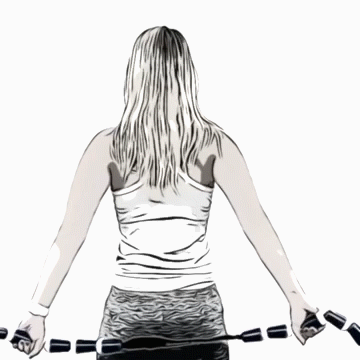
1. Shoulder/Chest Stretch
- Stand with your feet shoulder-width apart and hold a towel behind your back using both hands.
- Slowly pull the towel upward with your back straight, lifting your hands as high as possible without bending your elbows.
- Hold the stretch position for 20-30 seconds. Repeat 2-3 times.
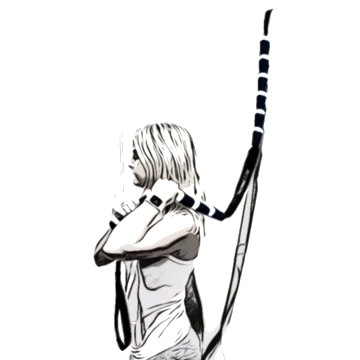
2. Deltoid Stretch
- Fasten the end of the Stretchrite on the top of the door.
- Pull StretchRite over left shoulder and reach right arm over to left shoulder to feel a deep stretch in the right deltoid muscle
- For deeper stretch slightly lean head towards the left.
- Hold stretch for about 15-20 seconds.
- Repeat with other arm, slightly tilt head to other side.

3. Isolated Shoulder Stretch
- Lift both arms over your head, holding one end of the StretchRite in either hand.
- For an isolated shoulder stretch on your right shoulder, move left arms towards end of the handles on left side and slowly pull downwards, keeping a an erect posture (do not lean towards left side).
- For a proper stretch on your left shoulder, move right hand towards the end of the strap and slowly pull down.
- Keep each stretch for at least 15 second on each side.
Post-Operative and Advanced Performance Shoulder Stretching Exercises
Stretching plays an important role in the rehabilitation process following a rotator cuff surgery. After surgery, scar tissue and immobilization can lead to stiffness and a limited range of motion in the shoulder. Stretching exercises help improve flexibility and gradually restore the normal range of motion.
Traditional rehabilitation methods may limit you to only stretch when visiting your physical therapist. However, with the use of ProStretch ShoulderFlex thereby integrating guided active stretches, you can take charge of your own recovery journey. The carefully designed stretches in the included manual are tailored to facilitate shoulder rehabilitation, ensuring you are using correct form.
PLEASE NOTE: Prior to using ProStretch ShoulderFlex, we strongly encourage you to consult your physical therapist or doctor for proper use.
The key to successful rehabilitation lies in the proper execution of exercises, and that's precisely where the ShoulderFlex shines. By providing step-by-step instructions you can confidently perform the below exercises with precision and accuracy. This not only enhances the effectiveness of your rehabilitation but also minimizes the risk of potential setbacks or injuries.
Included Exercises:
- Moderate Abducted for Internal Rotation
- Advanced Adducted for Internal Rotation
- Moderate Adducted for External Rotation
- Advanced Abducted for External Rotation
Watch video to view the above exercises in action.
1. Moderate Abducted for Internal Rotation
Abducted Internal Rotation helps stretch the internal rotators of the shoulder, including the subscapularis muscle, which may have become tight or contracted. By strengthening the subscapularis through Abducted Internal Rotation, you contribute to the overall stability of the joint. This can help reduce the risk of future injuries and improve your shoulder's ability to withstand forces during movement and physical activities.
2. Advanced Adducted for Internal Rotation
Adducted Internal Rotation is a functional exercise that mimics movements involved in daily activities and sports. By improving internal rotation strength and flexibility, this exercise can help you regain the ability to perform tasks such as reaching behind your back, tucking in your shirt, or throwing a ball. By performing this exercise, you gradually increase the range of motion in internal rotation, helping to restore flexibility and mobility in the shoulder joint.
3. Moderate Adducted for External Rotation
External adducted rotation specifically targets the rotator cuff muscles, including the supraspinatus, infraspinatus, teres minor, and subscapularis. This rotation movement helps to regain flexibility and lengthen the rotator cuff muscles, reducing muscle tightness or stiffness that may result from surgery or immobility.
4. Advanced Abducted for External Rotation
External abducted rotation not only strengthens the rotator cuff and surrounding muscles but also enhances dynamic stability of the shoulder joint. This exercise challenges the muscles to work together to control the movement and maintain proper alignment of the joint. By improving dynamic stability, abducted rotation helps protect the shoulder joint during daily activities, sports, and other functional movements.
CONCLUSION
Doing these exercises is a good way to help you find shoulder and upper arm pain relief and allow you to get back to those activities that shoulder and arm pain have kept you away from. Before doing any exercises always be sure to use the proper equipment to protect and support the arm. Using a stretching strap can allow you to achieve exercises for greater mobility. Try ProStretch® StretchRite® to monitor your upper arm stretches progress.
PLEASE NOTE: The information on this website and article is for information only and should not be used as a substitute for consulting your doctor. Consult your doctor for proper diagnosis and rehabilitation.
RELATED ARTICLES
Tendonitis is a condition that affects millions of individuals across the globe. It can...
Whether you are strapped for time or are unsure of whether or not...
As a physical therapist, you hold a pivotal role in guiding patients towards overcoming rotator cuff pain....




